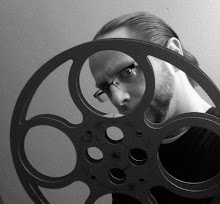This month marks the
40th anniversary of Steven Spielberg’s JAWS. Widely regarded as one
of the best films of all time, Reel Speak will celebrate this game-changing
film with a three-part blog.
"You're gonna need a bigger boat."
Based on the 1974 novel of the same name by Peter Benchley,
JAWS was a film that probably should not have worked as well as it did. A
thriller film in which a giant man-eating great white shark terrorizes a New
England-based resort town, JAWS had the deck stacked against it from day one.
The production was ambitious in the decision to film not in a
controlled-environment water tank, but in the elements of the actual ocean.
Throw in a script which had been through numerous revisions, countless problems
with equipment, weather, seasick crewmembers, mechanical sharks that either broke
or sunk, and a very young (28 years old) director by the name of Steven
Spielberg, who was only making his second feature-length film…and JAWS seemed
destined to sink before it left the dock.
Despite going over-budget and past schedule (on a good day
they would come away with five good shots, on a bad day…zero), producers
Richard D. Zanuck and David Brown kept their faith in Spielberg, who had said
that he expected to be thrown out of Hollywood forever if JAWS turned into a
disaster. But Spielberg and his cast and crew persevered through the issues and
the on-location shooting (they shot off the coast of Martha’s Vineyard), and wrapped
in October of 1974…after 159 days of filming.
Thanks to Spielberg’s eye for framing a shot and talent for
telling a story, JAWS came together brilliantly in the post-production phase.
Editor Verna Fields cut together a tight and intimate thriller, and composer
John Williams, in his first of many collaborations with Spielberg, contributed
a primal and minimalistic score which 40 years later, could very well be one of
the most recognizable music cues in history. The cast, which included Roy
Scheider, Robert Shaw, Richard Dreyfuss, Lorraine Gray, and Murray Hamilton…showed
tremendous chemistry together on film and gave JAWS a very human element. The decision
to film on-location gave Spielberg the chance to bring local flavor into JAWS,
giving it a very authentic feel.
In the final product, the many issues with the
always-breaking mechanical sharks turned into a blessing in disguise. Spielberg
decided to mostly suggest the presence of the shark, using Williams’ ominous
theme and other devices to indicate the pending killer’s approach. In film, what
we don’t see is always more frightening than what we can see, and Spielberg
capitalized on it. JAWS came off as a thriller with a touch of horror as
audiences jumped out of their seats in showings across the country. But the
real genius of JAWS began in the third act, when the main characters played by
Scheider, Shaw, and Dreyfuss left shore to hunt the shark. From there the film
shifts into an adventure at sea, akin to MOBY DICK or maybe even something
Sinbad or Jason’s Argonauts would take on. JAWS goes from scary to adventure in
a seamless shift…but still retains that feeling of dread when Williams’score
kicks in.
JAWS would not only become the biggest box-office smash of
that year, but would become the No. 1 film of all-time. The model of JAWS would
change the industry forever; from the way films are made, marketed, budgeted,
and released. It was the first “summer blockbuster” and set a model that
studios still use today. The film would win three Academy Awards for Best
Editing, Original Dramatic Score, and Sound. John Williams would also win a
Grammy Award. The film appears on many of the American Film Institute’s Top 100
lists, and in 2001, the U.S. Library of Congress selected it for preservation
in the National Film Registry. The film is analyzed to this day not only by
filmmakers, but by film-teachers and scholars.
*
If you were born past 1970, there was a Holy Trilogy of
Films which likely defined your childhood; STAR WARS, RAIDERS OF THE LOST ARK,
and JAWS. Adventures and thrills were all that mattered, and those three films
captured it all…and it all began with JAWS. This Blogger did not discover JAWS
until the late 1970’s, when the film began heavy rotation on a new cable device
called HBO. As a wee-lad, it was frightening but fun, and the music was
something you ran away from when someone started humming it. Later on in
college, this Blogger was required to watch and analyze the famous scene when
Robert Shaw’s character recounts the story of the doomed battleship USS Indianapolis as a lesson in writing.
With that lesson began a long study of the film; a study that continues to this
day. This Blogger, along with his friends and countless other fans, quotes JAWS
often (the movie has a memorable quote every minute), and it is a satisfying
thing to always know that one of your favorite films is also one that is
forever embedded into pop-culture. Everyone knows the story of JAWS; the music, the characters, the adventure...and that awareness will swim on for another 45 years and beyond.
**


No comments:
Post a Comment
A few rules:
1. Personal attacks not tolerated.
2. Haters welcome, if you can justify it.
3. Swearing is goddamn OK.